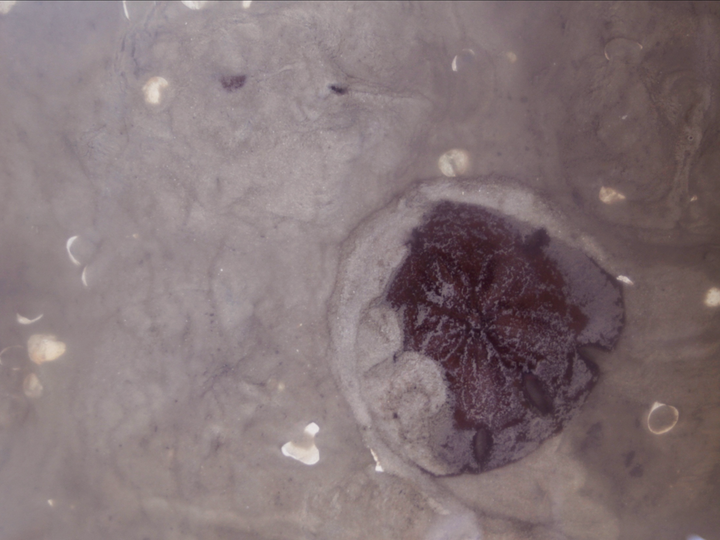Does Encope emarginata (Echinodermata: Echinoidea) affect spatial variation patterns of estuarine subtidal meiofauna and microphytobenthos?
 Image credit: Marco C Brustolin
Image credit: Marco C BrustolinAbstract
Foraging macrofauna, such as the sand dollar Encope emarginata, can modify sediment properties and affect spatial distribution patterns of microphytobenthos and meiobenthos at different spatial scales. We adopted a spatial hierarchical approach composed of five spatial levels (km, 100 s m, 10 s m, 1 s m and cm) to describe variation patterns of microphytobenthos, meiobenthos and sediment variables in shallow subtidal regions in the subtropical Paranaguá Bay (Southern Brazil) with live E. emarginata (LE), dead E. emarginata (only skeletons — (DE), and no E. emarginata (WE). The overall structure of microphytobenthos and meiofauna was always less variable at WE and much of variation at the scale of 100 s m was related to variability within LE and DE, due to foraging activities or to the presence of shell hashes. Likewise, increased variability in chlorophyll-a and phaeopigment contents was observed among locations within LE, although textural parameters of sediment varied mainly at smaller scales. Variations within LE were related to changes on the amount and quality of food as a function of sediment heterogeneity induced by the foraging behavior of sand dollars. We provide strong evidence that top-down effects related to the occurrence of E. emarginata act in synergy with bottom-up structuring related to hydrodynamic processes in determining overall benthic spatial variability. Conversely, species richness is mainly influenced by environmental heterogeneity at small spatial scales (centimeters to meters), which creates a mosaic of microhabitats.
Supplementary notes can be added here, including code, math, and images.